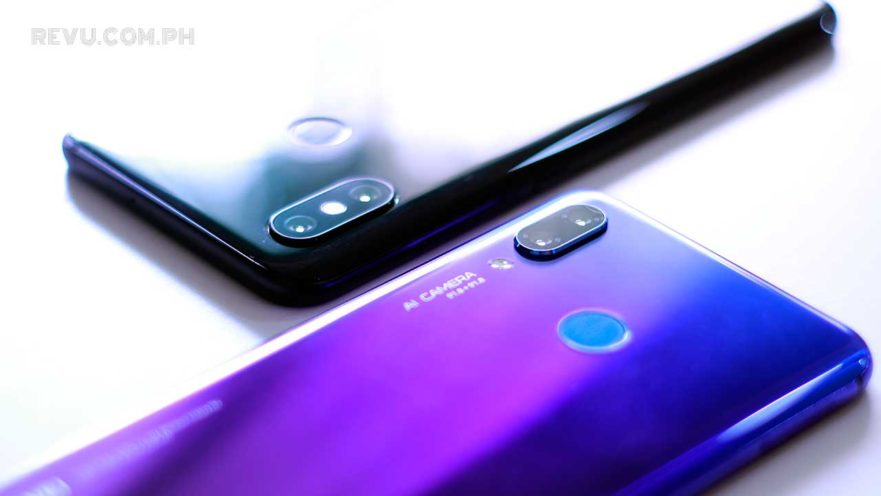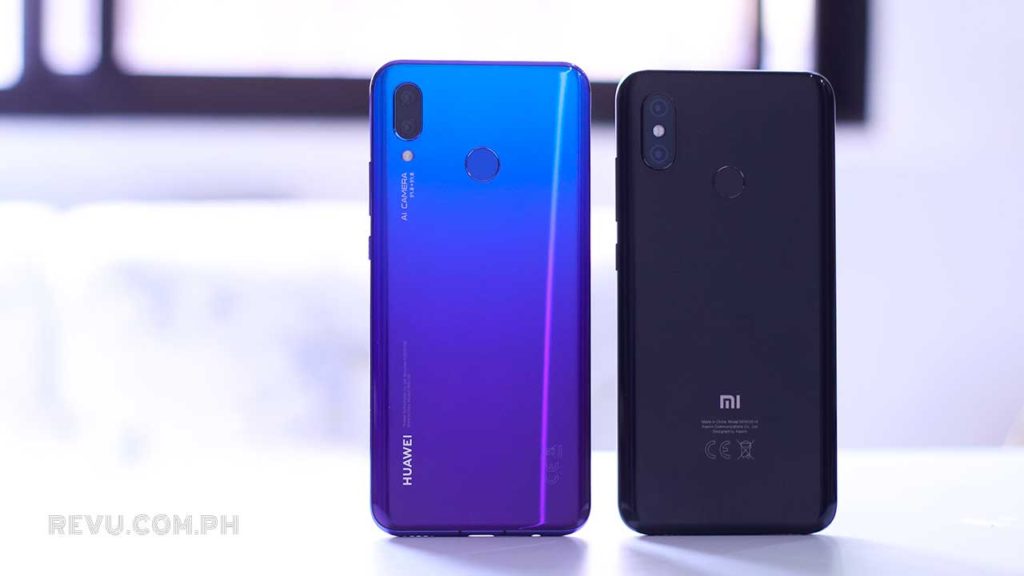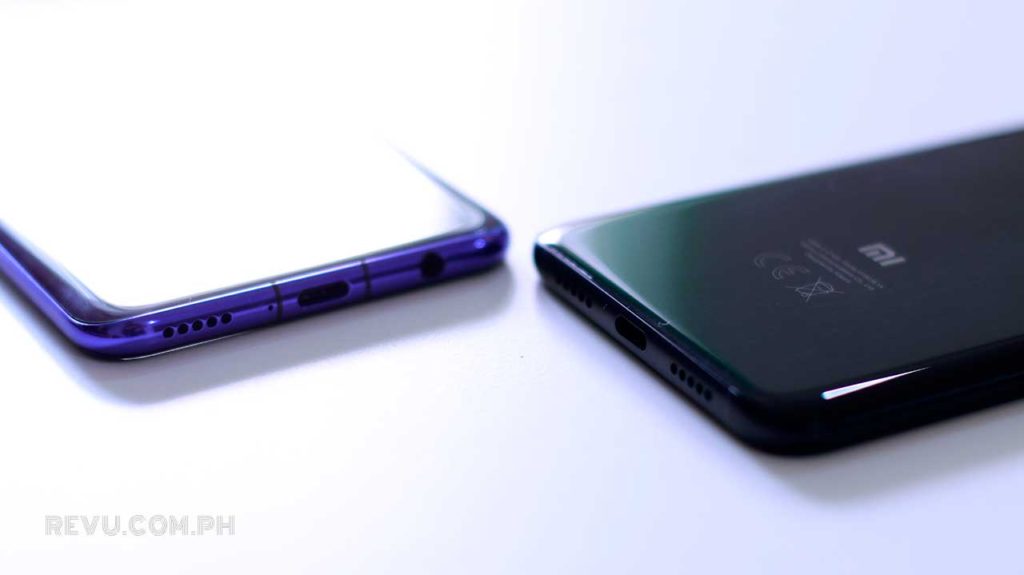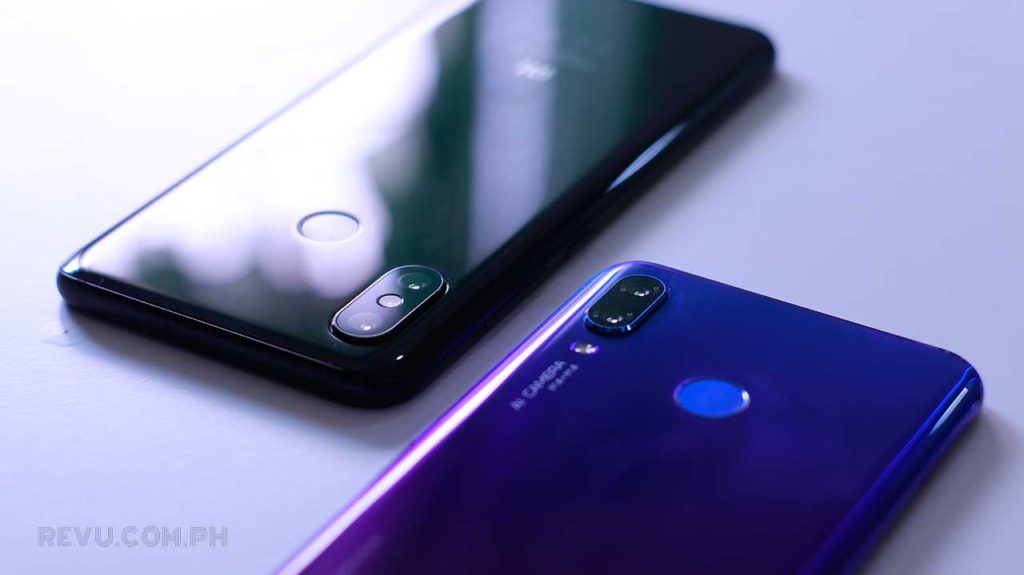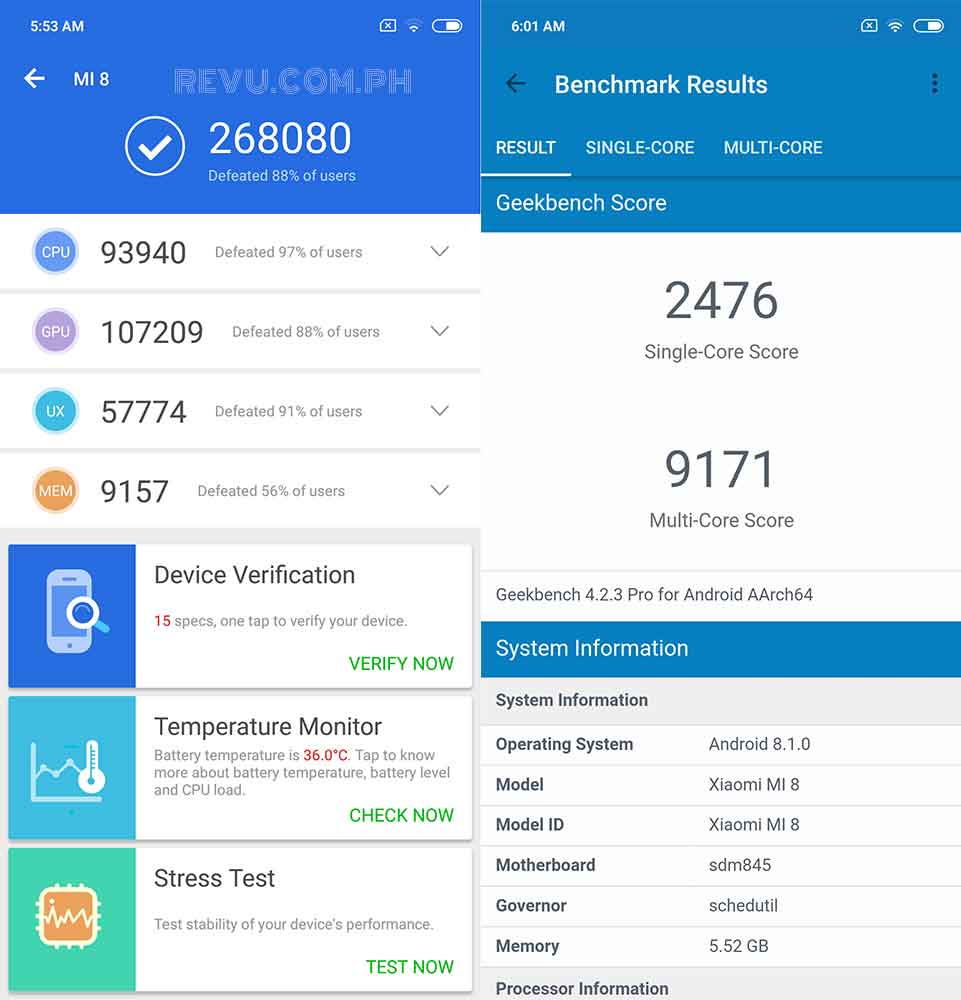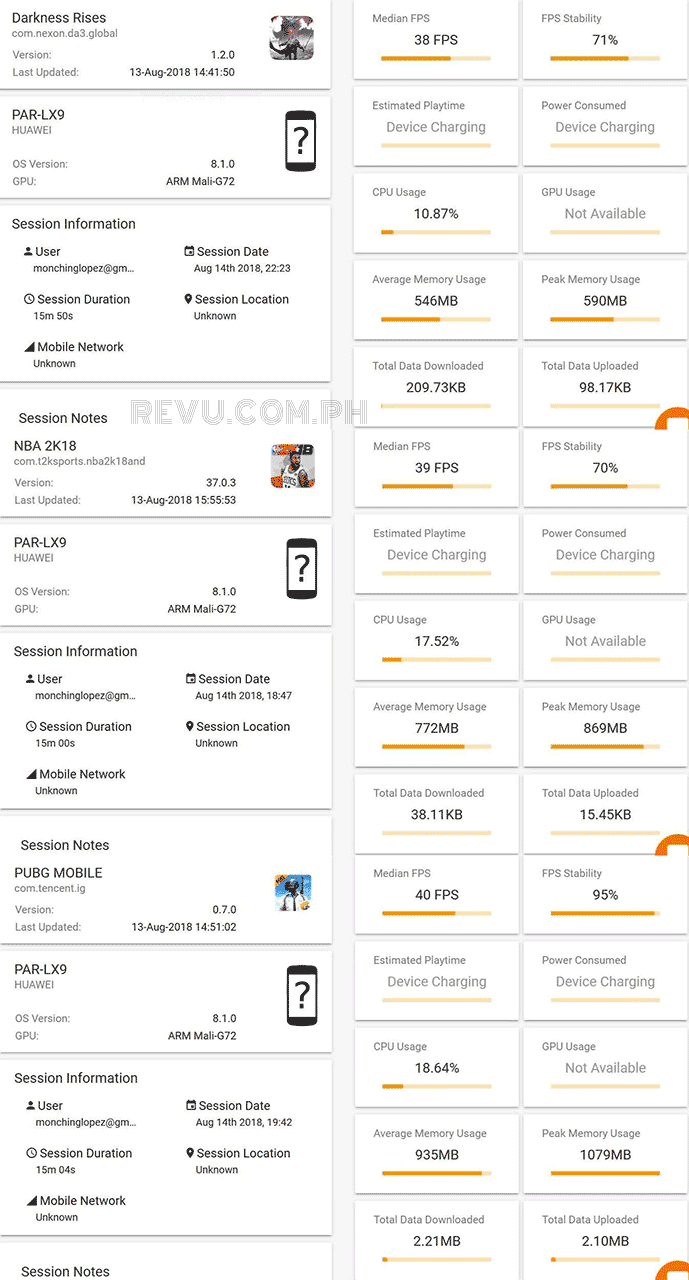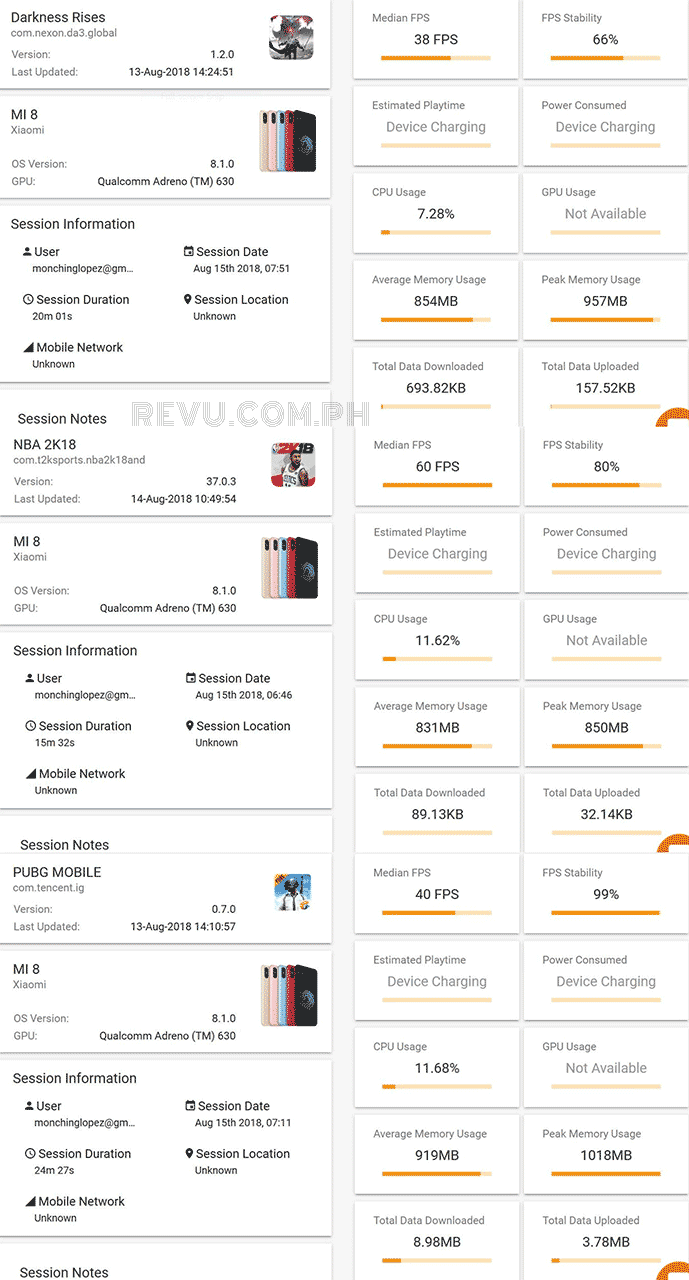In case you missed the announcement, the Huawei Nova 3 with 6GB of RAM and 128GB of storage is finally out in the Philippines. Anyone who’s convinced they want one can simply head to an authorized retailer to purchase it for P25,990 or around $486.
The Xiaomi Mi 8 has landed in official Mi stores in the country as well, with the most affordable Qualcomm Snapdragon 845-based smartphone on the market also retailing at P25,990 for 6GB RAM and 64GB of native memory. By paying a bit more, you can upgrade that storage to 128GB for P27,990 ($523).
SEE ALSO: Samsung Galaxy J8 vs. Huawei Nova 3i: A comparison
On paper and in usability, both the Huawei Nova 3 and Xiaomi Mi 8 are appealing choices for anyone after a flagship experience for less. They cost roughly the same, too. We won’t blame you for choosing either one.
That said, we can’t find a reason not to compare the two devices, because they’re so similar in appearance, performance, and major features. And so here we are with our comparison article that puts Huawei’s latest head to head with Xiaomi’s greatest.
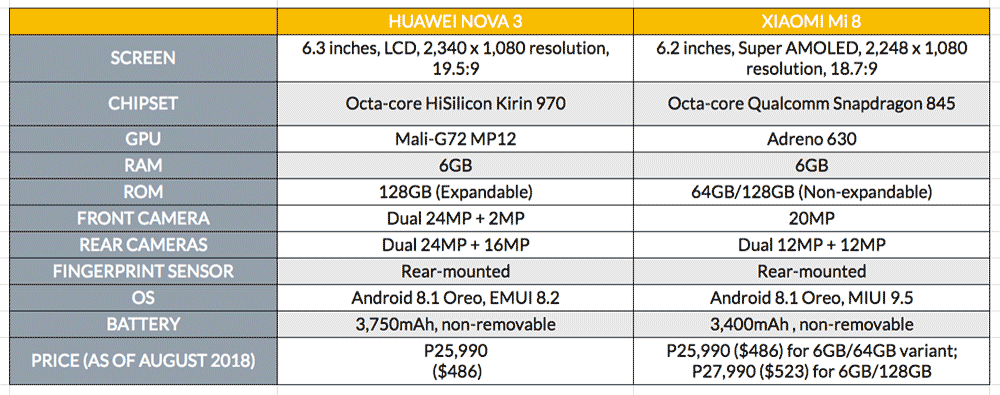
Huawei Nova 3 vs Xiaomi Mi 8: Specs and price comparison. But let’s go beyond what’s on paper, shall we? Read on
Hardware
We’ll start by saying that the Huawei Nova 3 and Xiaomi Mi 8 are roughly the same size and share the same dislike toward screen bezels. And yet there are obvious size disparities that make the Nova 3 a tad bit easier to handle and operate.
The Huawei phone is slightly longer and narrower because of its 19.5:9 aspect ratio, compared to the Mi 8’s 18.7:9 ratio. The Xiaomi flagship has a noticeably wider front that’s harder to wrap your fingers around, which we normally don’t say about a device with a smaller screen. But, in general, both are a pleasure to use because of how their front and rear panels neatly curl into their aluminum frames.
Like on most high-end devices, their backs are made of glass as well, though Huawei earns additional brownie points for applying a gradient color scheme on the Iris Purple version of the Nova 3. It looks especially eye-catching in person, but it might also be a little too loud for some people’s tastes. There’s always its black variant.
It’s worth noting that expandable storage is not available on the Mi 8, as it can only fit two nano-SIM cards. That’s it; there’s no room to insert extra memory. The Nova 3 includes one dedicated SIM tray plus a hybrid tray to accommodate either a second SIM card or a microSD card.
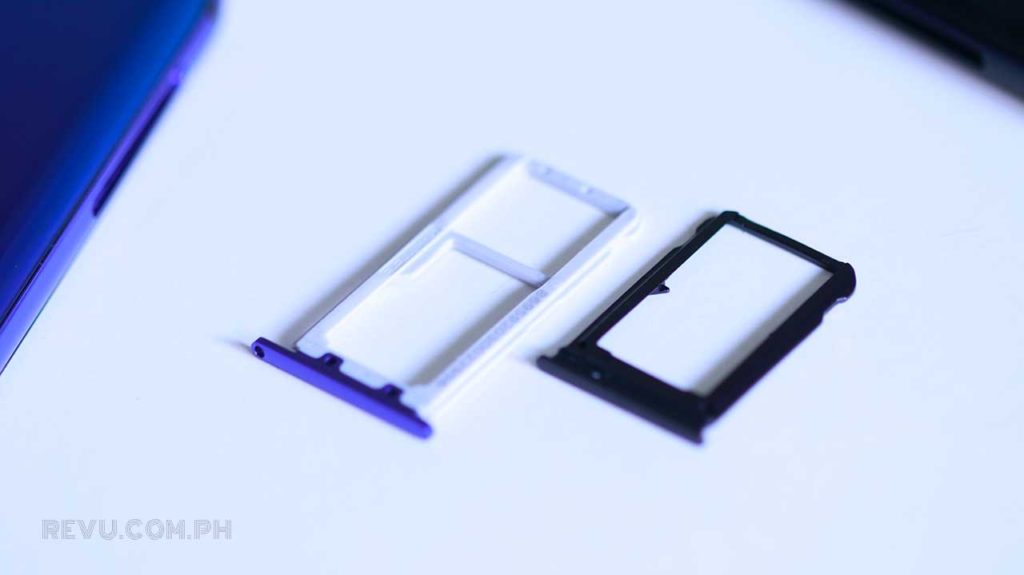
The Huawei Nova 3 includes a dedicated SIM tray plus a hybrid tray to accommodate either a second SIM card or a microSD card.
Another thing: The Xiaomi Mi 8 doesn’t have a headphone jack, nor does it ship with a pair of earbuds. However, it does come with a USB-C adapter for wired earphones, which Xiaomi assumes you already own or have access to. The Nova 3 offers an audio jack, and earbuds are part of the retail package.
Both phones have a USB-C port for quickly charging their batteries. The Nova 3 uses Huawei’s own SuperCharge solution, while the Mi 8 relies on Qualcomm’s Quick Charge technology to top up its battery in under two hours.
Then there’s the difference in display size and quality. The Mi 8 boasts Super AMOLED technology on a smaller screen, whereas the Huawei Nova 3 has a 6.3-inch LCD. Some people prefer the more natural tone of LCDs, of course, but Xiaomi has picked such an extraordinarily good panel that it’s hard to argue in favor of the Nova 3 in the display department.
The Mi 8 is HDR10-compatible and supports the DCI-P3 wide color gamut for an even better picture with punchy, true-to-life colors and deeper blacks and higher brightness. The AMOLED screen also means that hiding the notch via a black bar is a more workable option should you find it too distracting.
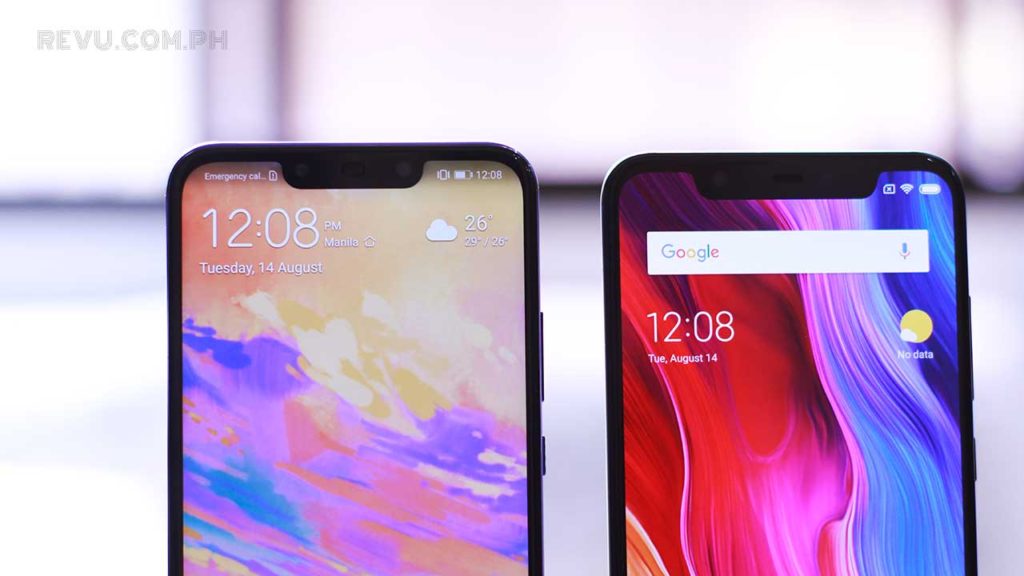
Find the notch too distracting? Hiding it via a black bar is a more workable option on the Xiaomi Mi 8’s AMOLED screen.
Technically and as seen by the naked eye, it’s among the best — if not the best — out there at this price point. The Nova 3 is quite huge at 6.3 inches, and it can produce a good picture. However, keep in mind that it doesn’t offer the same viewing experience you’ll get from the Mi 8.
The Xiaomi phone also does 3D face unlock (like the Apple iPhone X), which is more complicated than regular, selfie-camera-based face unlock. But if you’re hoping to try out this feature now, plus a few missing others that were announced at launch, you’ll have to wait for Xiaomi to roll out MIUI 10 to the global version of the Mi 8.
Advanced facial recognition is likewise available on the Huawei Nova 3, which uses an infrared emitter in the notch to illuminate your face and unlock the device almost instantly even in darker environments.
Cameras
Both these models pack capable camera systems on the front and back, but their approach to snapping the highest-quality image possible is different. If we’re counting sensors, too, the Huawei handset wins out, thanks to its dual front-facing cameras. The Mi 8 has a single solution for selfies, and yet it’s no less impressive than what the Nova 3 comes with.
For regular photos, the Xiaomi flagship is equipped with two 12-megapixel cameras of variable apertures and focal lengths. The extra camera on the Mi 8 is f/2.4 and can zoom in up to 2x without losing pixels.
On the other hand, the Huawei Nova 3 includes a combination of a 16-megapixel primary sensor and a 24-megapixel monochrome one, which allows the system to capture images with rich detail and minimal graininess. You can also use it to take great black-and-white shots.
Both devices integrate artificial intelligence or AI into their respective camera software, so we expect the point-and-shoot experience to feel like an upgrade regardless of which phone you pick.
The following photos were shot on the Huawei Nova 3 and Xiaomi Mi 8. We’ll let you decide which phone did a better job overall.
[sciba leftsrc=”https://www.revu.com.ph/wp-content/uploads/2018/08/Huawei-Nova-3-sample-picture-Revu-Philippines-b.jpg” leftlabel=”Huawei Nova 3″ rightsrc=”https://www.revu.com.ph/wp-content/uploads/2018/08/Xiaomi-Mi-8-sample-picture-Revu-Philippines-b.jpg” rightlabel=”Xiaomi Mi 8″ mode=”horizontal” width=””]
Sample colored pictures: Huawei Nova 3 vs Xiaomi Mi 8
[sciba leftsrc=”https://www.revu.com.ph/wp-content/uploads/2018/08/Huawei-Nova-3-sample-picture-black-white-Revu-Philippines-a.jpg” leftlabel=”Huawei Nova 3″ rightsrc=”https://www.revu.com.ph/wp-content/uploads/2018/08/Xiaomi-Mi-8-sample-picture-black-white-Revu-Philippines-a.jpg” rightlabel=”Xiaomi Mi 8″ mode=”horizontal” width=””]
Sample black-and-white photos
[sciba leftsrc=”https://www.revu.com.ph/wp-content/uploads/2018/08/Huawei-Nova-3-sample-picture-Revu-Philippines-a.jpg” leftlabel=”Huawei Nova 3″ rightsrc=”https://www.revu.com.ph/wp-content/uploads/2018/08/Xiaomi-Mi-8-sample-picture-Revu-Philippines-a.jpg” rightlabel=”Xiaomi Mi 8″ mode=”horizontal” width=””]
Another set of sample colored shots
[sciba leftsrc=”https://www.revu.com.ph/wp-content/uploads/2018/08/Huawei-Nova-3-sample-picture-2x-zoom-Revu-Philippines-a.jpg” leftlabel=”Huawei Nova 3″ rightsrc=”https://www.revu.com.ph/wp-content/uploads/2018/08/Xiaomi-Mi-8-sample-picture-2x-zoom-Revu-Philippines-a.jpg” rightlabel=”Xiaomi Mi 8″ mode=”horizontal” width=””]
Zoomed in 2x
[sciba leftsrc=”https://www.revu.com.ph/wp-content/uploads/2018/08/Huawei-Nova-3-sample-picture-Revu-Philippines-c.jpg” leftlabel=”Huawei Nova 3″ rightsrc=”https://www.revu.com.ph/wp-content/uploads/2018/08/Xiaomi-Mi-8-sample-picture-Revu-Philippines-c.jpg” rightlabel=”Xiaomi Mi 8″ mode=”horizontal” width=””]
Take note that they were taken from the same distance
[sciba leftsrc=”https://www.revu.com.ph/wp-content/uploads/2018/08/Huawei-Nova-3-sample-picture-Revu-Philippines-d.jpg” leftlabel=”Huawei Nova 3″ rightsrc=”https://www.revu.com.ph/wp-content/uploads/2018/08/Xiaomi-Mi-8-sample-picture-Revu-Philippines-d.jpg” rightlabel=”Xiaomi Mi 8″ mode=”horizontal” width=””]
One more set
[sciba leftsrc=”https://www.revu.com.ph/wp-content/uploads/2018/08/Huawei-Nova-3-sample-selfie-picture-portrait-mode-bokeh-effect-Revu-Philippines-a.jpg” leftlabel=”Huawei Nova 3″ rightsrc=”https://www.revu.com.ph/wp-content/uploads/2018/08/Xiaomi-Mi-8-sample-selfie-picture-portrait-mode-bokeh-effect-Revu-Philippines-a.jpg” rightlabel=”Xiaomi Mi 8″ mode=”horizontal” width=””]
Sample selfies in Portrait mode (with bokeh effect)
[sciba leftsrc=”https://www.revu.com.ph/wp-content/uploads/2018/08/Huawei-Nova-3-sample-selfie-picture-Revu-Philippines-a.jpg” leftlabel=”Huawei Nova 3″ rightsrc=”https://www.revu.com.ph/wp-content/uploads/2018/08/Xiaomi-Mi-8-sample-selfie-picture-Revu-Philippines-a.jpg” rightlabel=”Xiaomi Mi 8″ mode=”horizontal” width=””]
In Auto mode this time
[sciba leftsrc=”https://www.revu.com.ph/wp-content/uploads/2018/08/Huawei-Nova-3-sample-selfie-picture-Revu-Philippines-b.jpg” leftlabel=”Huawei Nova 3″ rightsrc=”https://www.revu.com.ph/wp-content/uploads/2018/08/Xiaomi-Mi-8-sample-selfie-picture-Revu-Philippines-b.jpg” rightlabel=”Xiaomi Mi 8″ mode=”horizontal” width=””]
Selfies inside a room with a white backdrop
Qualcomm Snapdragon 845 vs. HiSilicon Kirin 970
The Snapdragon 845 and Kirin 970 are both at the top of the heap in the smartphone landscape, even though the latter has been on the market since last year. The Kirin 980, which will reportedly launch later this year, is said to be a high-tech powerhouse on a par, or even surpassing, Qualcomm’s latest and fastest.
That said, the Snapdragon 845 on the Mi 8 is a step up from the Kirin 970 in every way except when it comes to power efficiency, where the HiSilicon chip really shines relative to the competition. That means the Huawei Nova 3 retains its power when idle, though we wouldn’t call the Mi 8 particularly sloppy with its battery management.
Where things really start to differ is graphics performance, as the Snapdragon 845 outperforms the Kirin 970 when running demanding games and pushing almost the same amount of pixels.
For graphics-comparison purposes, we tested GPU performance in PUBG Mobile, NBA 2K18, and Darkness Rises by installing and running GameBench, a pro-grade tool that allows for cross-platform testing of mobile games.
Gameplay video on the Huawei Nova 3
Gameplay video on Xiaomi Mi 8
Our results indicate that the Mi 8 is a far superior choice to the Nova 3 for gaming. Which, may we remind you, is expected of a top-of-the-line chip from 2018. On a more positive note for Huawei, the same results also show that the Nova 3 is still an excellent value for gamers who don’t need premium performance.
Final thoughts
The Huawei Nova 3 offers better handling than the Xiaomi Mi 8. The Iris Purple color option looks flashier, too, if that’s what you’re after. In terms of hardware, the Mi 8 really shines in the display department, with its bright and vivid OLED display.
In the camera department, both the Nova 3 and Mi 8 bring great versatility to their secondary rear cameras, even allowing them to work independently of the main shooter.
The Huawei Nova 3’s extra front-facing camera expands its capabilities beyond self-portraits in ways the global version of the Xiaomi Mi 8 doesn’t allow (yet)
However, the extra front-facing camera on the Nova 3 expands its capabilities beyond self-portraits in ways the global version of the Mi 8 doesn’t allow (yet).
Day-to-day performance is great from both sides. But for gaming, the choice should be obvious; the Snapdragon 845 inside the Mi 8 is simply more powerful.
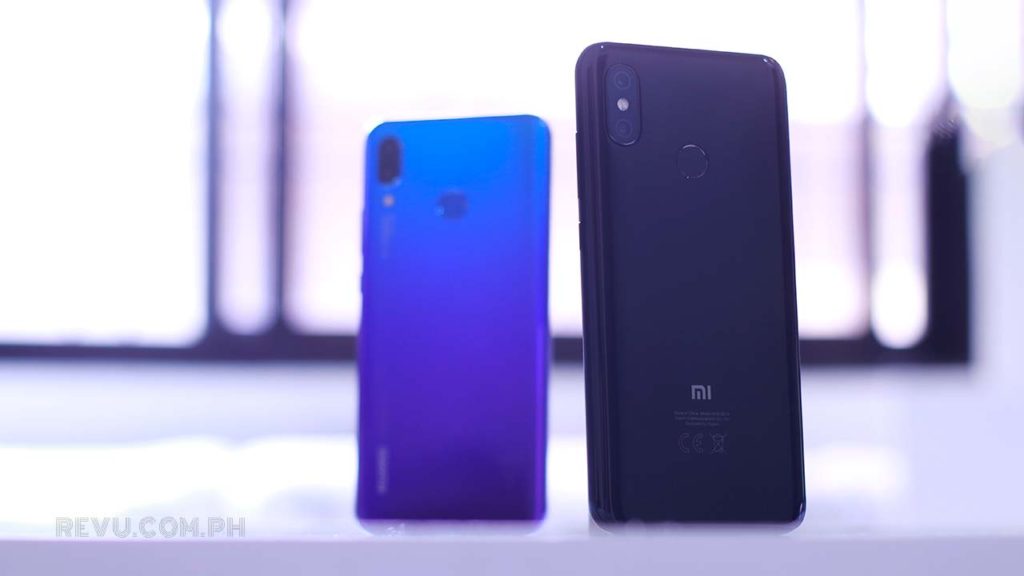
For gaming, the choice should be obvious; the Snapdragon 845 inside the Mi 8 is simply more powerful
The choice really now boils down to your priority. We’ll be plenty happy with either one as our daily driver, and we’re sure you will be as well. These devices are excellent value for the money.
Share this Post


